
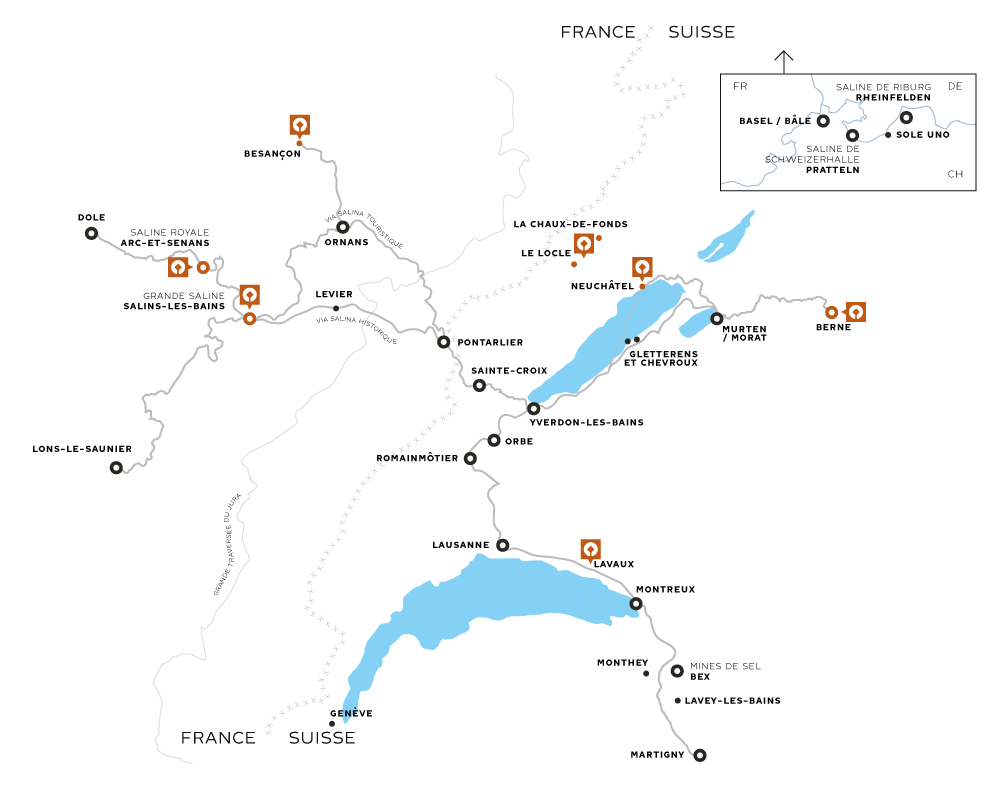
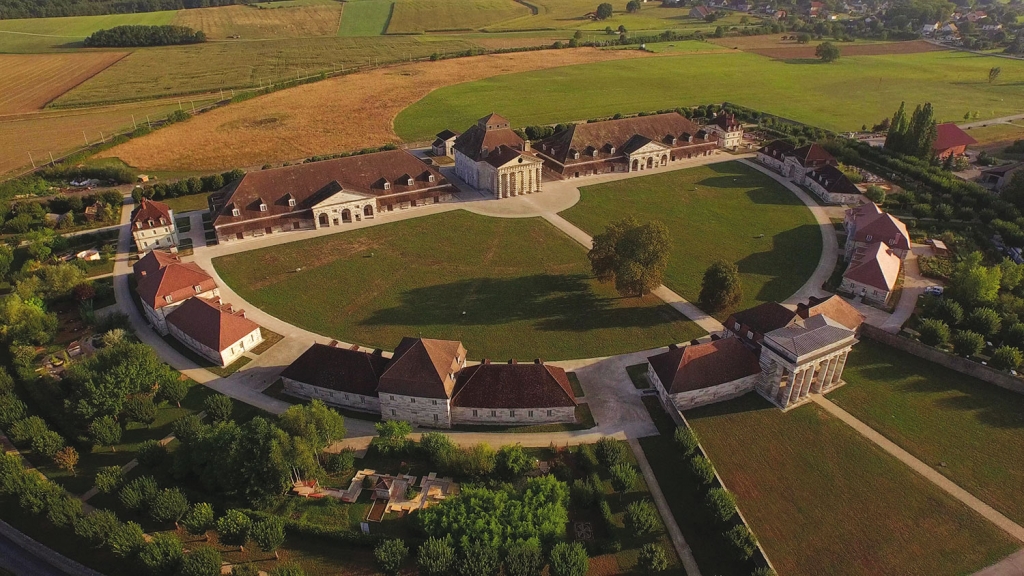
THE ARC-ET-SENANS ROYAL SALTWORKS
The Arc-et-Senans Royal Saltworks were included on the UNESCO World Heritage list in 1982. Its magnificent buildings were designed by Claude-Nicolas Ledoux (1736-1806), visionary architect of the Enlightenment period. Since 1973 the site has been a cultural meeting point with the aim of simultaneously being a museum / heritage site, a venue for cultural events and a place for reflecting on the major challenges of our modern world. Artists and researchers can come to stay all year round and the three-star hotel is also open for other visitors. They can use the library and, from June to October, enjoy the garden festival.
For more information please visit : www.salineroyale.com
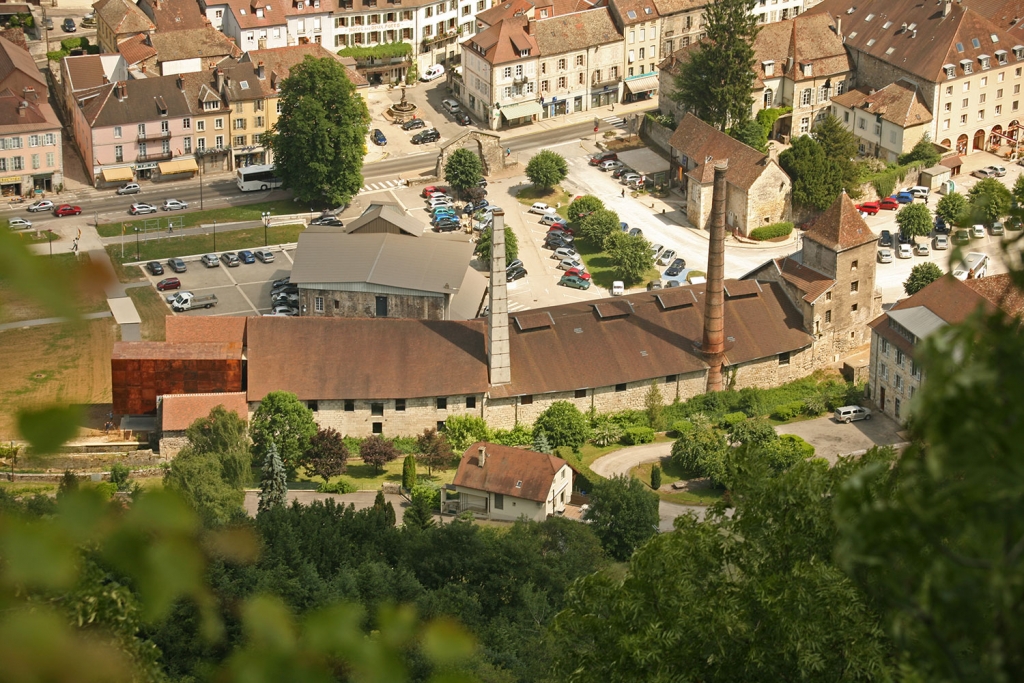
THE GREAT SALTWORKS OF SALINS-LES-BAINS
The Great Saltworks of Salins-les-Bains are a UNESCO World Heritage site in the Jura department. From as far back as the 8th century, Salins-les-Bains has benefited from an exceptional gift of nature: salt. The town thus owes its wealth to the winning and evaporation of brine. The Grande Saline in Salins-les-Bains was classified UNESCO World Heritage site in 2009, following the classification of the Arc-et-Senans Royal Saltworks, that provided brine through a ‘brine-duct’, and the Grande Saline shows the development and the modernisation of an industrial heritage without compare that lasted until 1962.The location is a key symbol of salt production in the Franche-Comté region.
For more information please visit : www.salinesdesalins.com
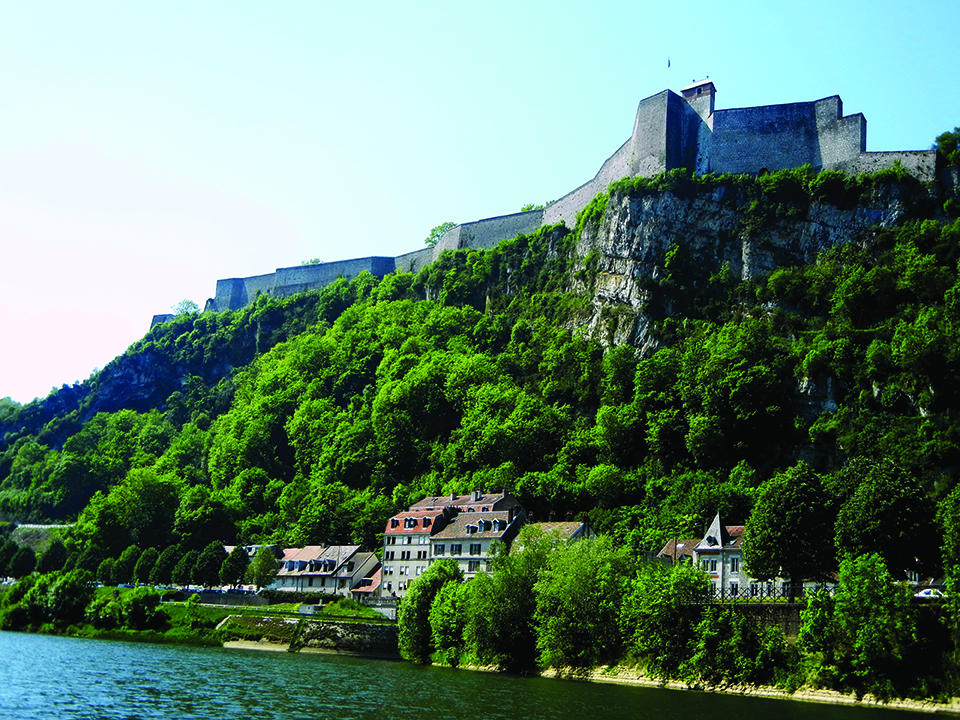
THE CITADEL OF BESANÇON AND THE VAUBAN FORTIFICATIONS
Besançon is known for its wealth of architectural, historical, cultural and natural heritage and the city has many museums, monuments, stylish private residences and other places of interest. Together with eleven other Vauban fortifications, Besançon was classified as a UNESCO World Heritage site in 2008 and the work of this genius of military architecture continues to be of great significance for the capital of the Franche-Comté region. The Citadel looks down on Besançon from 100 metres higher up and its protected walkways offer spectacular views. Rich in significance and variety, history blends in with modernity in this impressive city.
Besançon is located at the crossroads of two important roads: Lyon-Strasbourg: the “St James’s Way” and the ”Via Francigena”. On the outskirts of Besançon (the GR595 red and white walking trail), the path goes up via the “chemin de la Creuse, to the “Chapelle des Buis”, then to the lower part of Montfaucon, the farms of “la Couvre”, the “petit Saône”, and the village of Mamirolle. Source : ASSOCIATION des CHEMINS DE COMPOSTELLE et de ROME en BOURGOGNE-FRANCHE-COMTE, ACCR-BFC
For more information please visit : www.citadelle.com
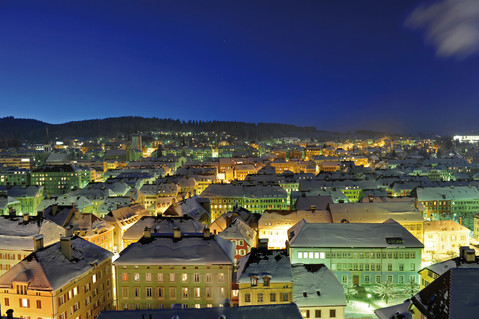
THE URBAN WATCHMAKING OF THE TOWNS OF LA CHAUX-DE-FOND AND LE LOCLE
The towns of La Chaux-de-Fonds and Le Locle are a model of congruence between urbanism and industry. By virtue of their original and authentic architecture, the two towns constitute an exceptional heritage of the industrial period running from the end of the 18th century until current times. In the 19th century progress-oriented entrepreneurialism combined with an ambition to increase social justice led to a type of urbanism and architecture that was well suited to the needs of the watchmaking industry in the two places. A unique way of combining production venues and housing allowed the industrial managers of the time to be pragmatic, save costs and enhance the quality of life. They were recognised as an international reference for the watchmaking industry, as well as a model of creating harmony between tradition and innovation, by virtue of their classification as a UNESCO World Heritage site. Visitors can take a guided tour (on foot or on a tourist train) and visit renowned museums to discover this piece of exceptional urban heritage and immerse themselves in the world of this industrial adventure.
For more information please visit : www.watch-cities.ch
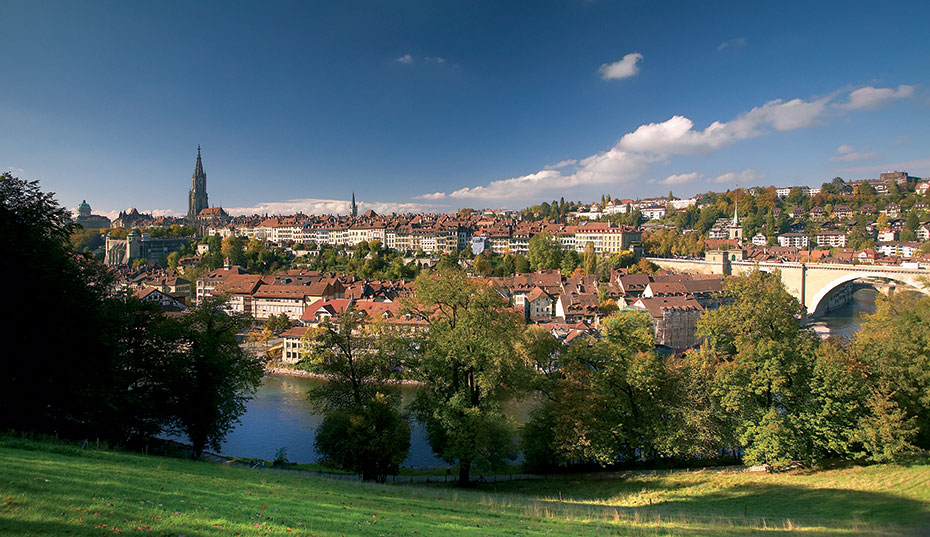
THE OLD TOWN OF BERN
Goethe affirmait n’avoir jamais vu une ville aussi belle que Berne. Goethe once said that he had never seen a city as beautiful as Bern and one can but agree with him. The baroque-style Old Town of the federal capital lies monumentally in a bend of the river Aare and has preserved its medieval structure and architectural wealth while at the same time meeting the demands of a modern and lively city. A leisurely stroll there is like an excursion through the centuries and allows today’s visitor to admire the beautiful lines of houses, the patchwork of roofs – particularly impressive when looking down from the cathedral’s bell-tower – the arcades, caves and towers, and of course the fountains that still have a large part of their original building material. At the beginning of the modern times, Bern was the seat of the former republic’s government as well as the administrative centre of the salt monopoly introduced in 1623.
For more information please visit : Old town of Bern
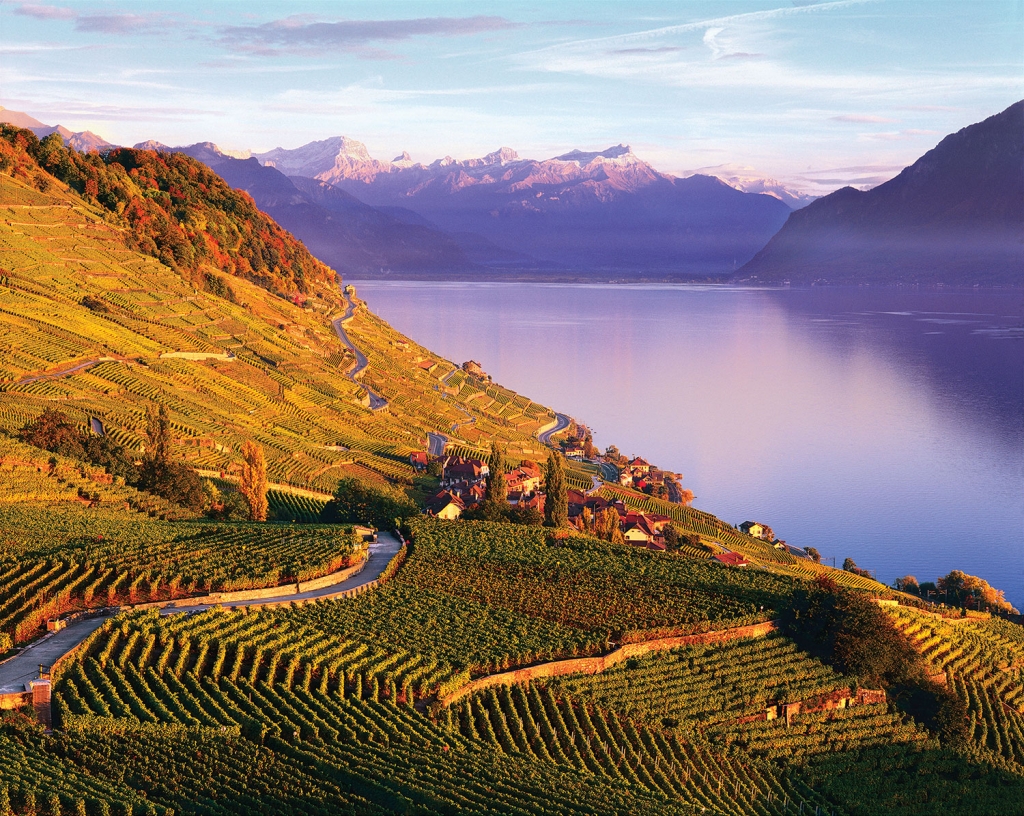
LAVAUX, TERRACED VINEYARDS
In the 11th century already, monks started cultivating wine-grapes in the fields around Lavaux. The stocks grew on narrow terraces supported by stone walls and ever since that time generations of winegrowers, eager to uphold traditions, have maintained and shaped this exceptional natural patchwork stretching out over approximately 40 km on the slopes bordering Lake Geneva. This culturally significant landscape constitutes one of the largest vineyards of Switzerland and comprises 14 well-preserved villages. The inhabitants of the area have succeeded in maintaining a healthy balance with their natural environment and the area beautifully illustrates the evolution and development that took place over a period of almost 1000 years.
For more information please visit : LAVAUX
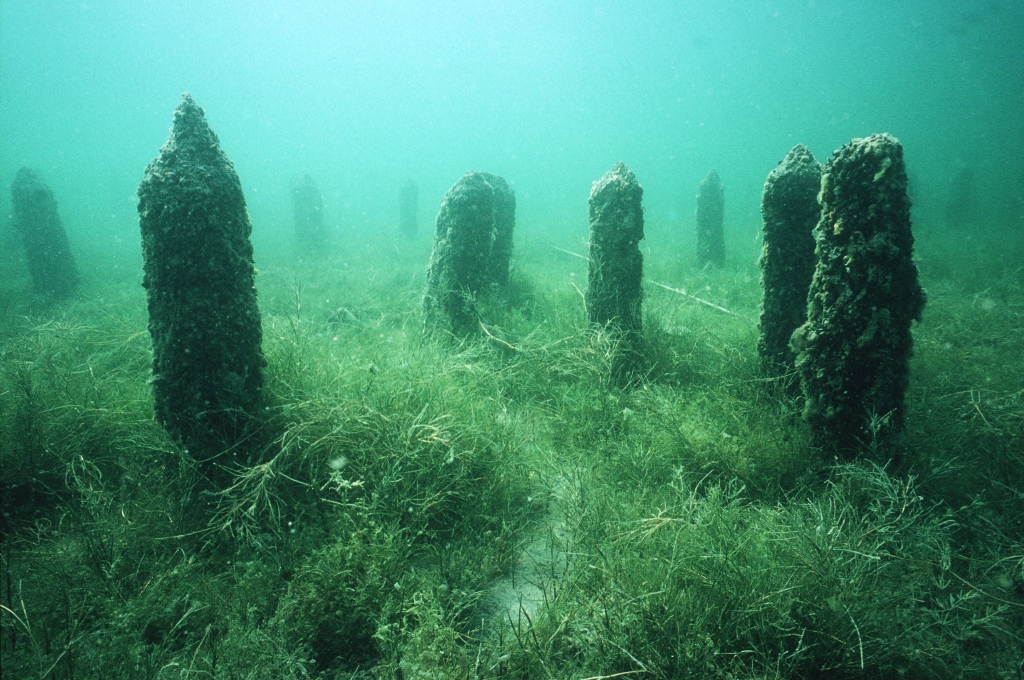
PREHISTORICAL PILE DWELLINGS AROUND THE ALPS
The Alpine pile dwellings are the remains of prehistoric habitats around the lakes and march areas of this mountain range region. The phenomenon is a so-called cross-border serial site because it is made up of 111 of the approximately 1000 known sites to be found in six countries (Switzerland, Germany, France, Italy, Slovenia and Austria). Fifty six of them are located in Switzerland and this country is the patron of the candidature in which 15 of its cantons participate. These remnants of prehistoric housing are a lively illustration of the advent and development of the first agricultural communities in the Alpine region.
For more information please visit : www.palafittes.org

